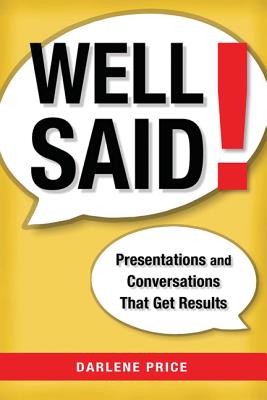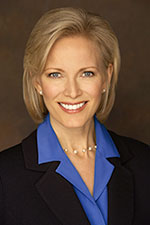Non-verbal communication is just as vital as verbal communication, so what are you really saying?
Studies show that nonverbal communication carries between 65-93% more impact than the actual words spoken, especially when the message involves emotional meaning and attitudes.
These nonverbal cues include facial expressions, eye contact, gestures, posture, body movement, tones of voice, dress, grooming, touch, and even your environment–wordless signals that speak volumes.
Darlene Price, founder and Well Said, Inc., and author of Well Said: Presentations and Conversations that Get Results says, “You cannot avoid sending nonverbal messages to others. However, you can train yourself to send the right ones.”
Here she offers her top five non-verbal communications tactics for achieving maximum performance in the workplace.
1. Look ’em dead in the eye
When speaking to others, ideally look directly into their eyes at least two to three seconds before looking away or moving to the next person. Glancing at someone for one second or less is known as ‘eye-dart’ and conveys insecurity, anxiety or evasion. Smile with your eyes.
2. Keep your cool even in the face of intense emotion.
Because your facial expressions are closely tied to emotion, they are often involuntary and unconscious. For example, in a meeting with your boss, he or she may say something to make you angry. However, a pensive scowl, rolling eyes, and pursed lips may not help matters. If instead you want to convey a positive collaborative attitude, choose to hold a slight smile, nod occasionally, raise your eyebrows to show interest, and maintain good eye contact.
3. Pay attention not just to what people are saying, but how they are saying it.
Separate the emotion from the actual words being used. Focus and seek to understand the nonverbal elements of your voice and how others are talking include the tone, pacing, pausing, volume, inflection, pitch and articulation. Try recording your side of several conversations throughout the day. Listen to the recordings and identify what emotions and attitudes your voice tone communicates.
4. Dress appropriately for the occasion.
Make sure your clothing fits the situation. Make sure ‘business casual’ is not ‘business careless.’ Choose high quality, well-tailored garments that convey professionalism. Depending on your corporate culture, wear a business suit or at least a jacket for important meetings and presentations, especially with senior leaders and customers. Avoid showy accessories, busy patterns, and tight or revealing garments. If career advancement is your goal, convey a polished professional presence in the workplace. Dress for the job you want, not the job you have.
5. Turn all of your electronics off!
Turn your smart phone, notebook, laptop, iPhone, iPad and even your iPod off! Don’t be the one who causes a distraction! Don’t check email, look at your phone, send a text, check the scores, or disengage in any way. Stay focused and attentive using open body language. Square your shoulders and point your toes directly toward the people you are meeting with. Lean into the conversation, focusing your eyes, ears and all your energy on them.
To ensure your colleagues and key stakeholders receive the maximum value you bring to the table, be sure to send the nonverbal cues that convey confidence, credibility and professionalism. In addition, you will be modeling these appropriate skills to others within the workplace.
Darlene Price is the president and founder of Well Said, Inc., a training and consulting company specializing in high-impact presentations and effective communication. Darlene has presented to thousands of audiences across six continents and coached the chief officers and senior executives in more than half the Fortune 100 companies. She is the author of Well Said: Presentations and Conversations that Get Results (AMACOM). www.wellsaid.com.


